Maintaining a soccer field is already a significant expense, with the costs of regular upkeep and maintenance adding up quickly. Beyond caring for the grass, the ongoing challenge of managing electrical costs for soccer or football field lighting can seem relentless. Older lighting fixtures often present their own set of issues, such as excessive heat, long warm-up times, and problematic glare. Alternatively, you might be dealing with inadequate lighting, prompting the need for a new installation.
So, what will it cost to install new lighting for your soccer or football field? The advances in LED technology have made running costs impressively low. However, the potential installation costs can be a concern for any field owner. Despite this initial investment, the benefits of LED lighting make it a worthwhile endeavor. Here’s why.
Table of Contents
ToggleFactors Affecting Soccer Field Lighting Cost
Field Size and Lighting Requirements
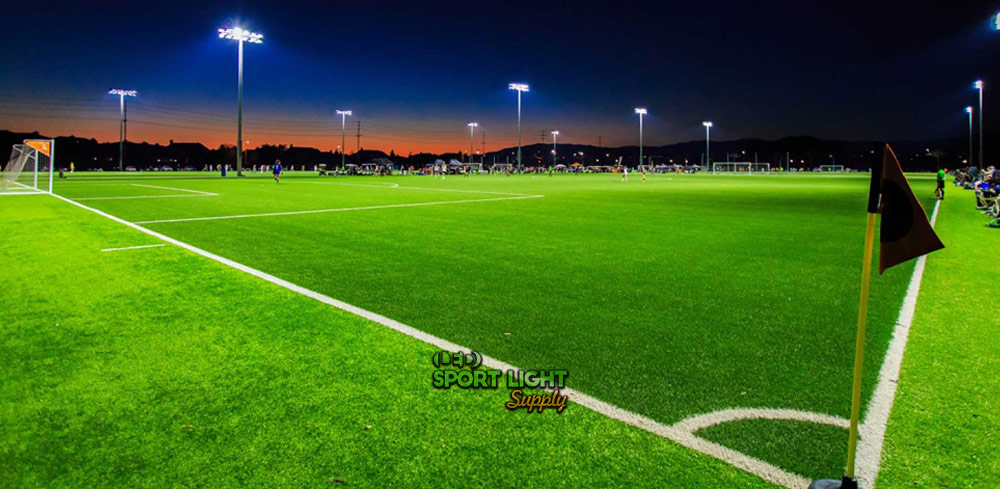
When considering the size of a soccer field, it’s important to recognize that not all pitches are created equal. You may be dealing with a standard-sized field or a smaller one designed for younger players. High school football fields can be more compact, allowing for activities like five-a-side soccer games or multiple matches side by side. The lighting needs for these variations will differ accordingly.
The size of your field is a key factor in determining how much lighting is required. Larger fields don’t necessarily need larger, more expensive lights. Instead, a well-designed stadium lighting plan can enhance performance and provide a better experience for spectators attending matches, not just for practice sessions.
Competition Level and Lighting Intensity
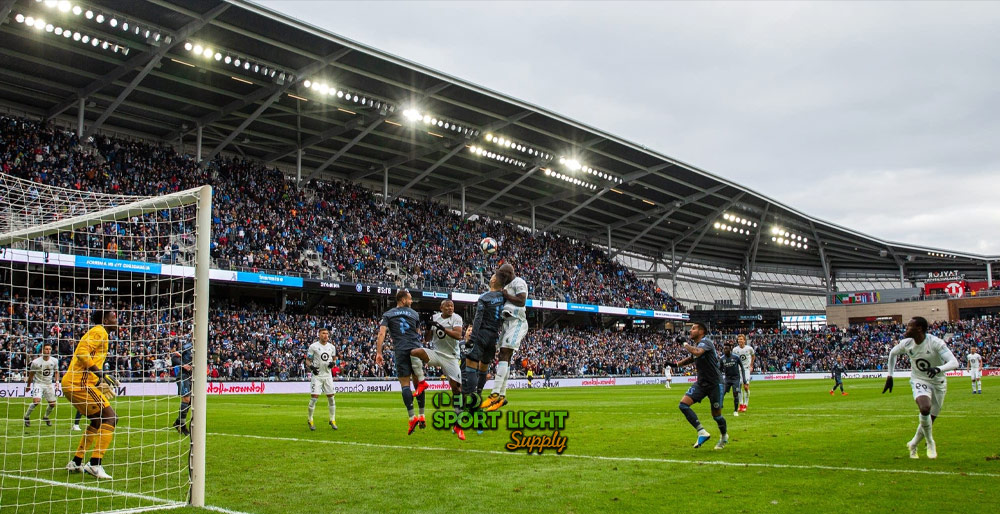
The level of competition on your soccer field will also influence the lighting requirements. Practice fields might need minimal lighting, but for competitive games, brighter lighting becomes essential. The level of professionalism in play, even at high school levels, demands adequate field illumination.
LED lighting offers a significant advantage in this regard. It can elevate the brightness levels, transforming a field from having basic amateur lighting to achieving near-professional standards. For professional games, upgrading to FIFA-level lighting standards can be a worthwhile investment.
Light Pole Height and Installation Considerations
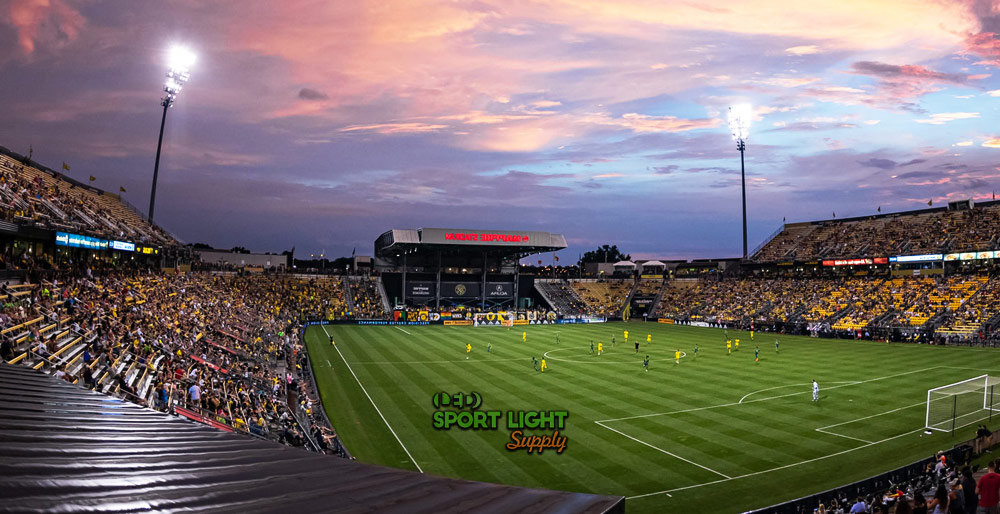
The height of light poles is another crucial factor in soccer field lighting. The poles need to be installed at an optimal height that ensures proper field illumination while avoiding obstructions to spectators’ views and minimizing glare. If your field already has poles from a previous lighting system, LED lights can often be installed as an upgrade.
The lighting fixtures used should match the luminance levels provided by the previous lamps. With LED lighting, the brightness can be significantly enhanced without overwhelming the field. This improvement benefits both players and spectators alike.
Light Pole Layout and Shadow Reduction
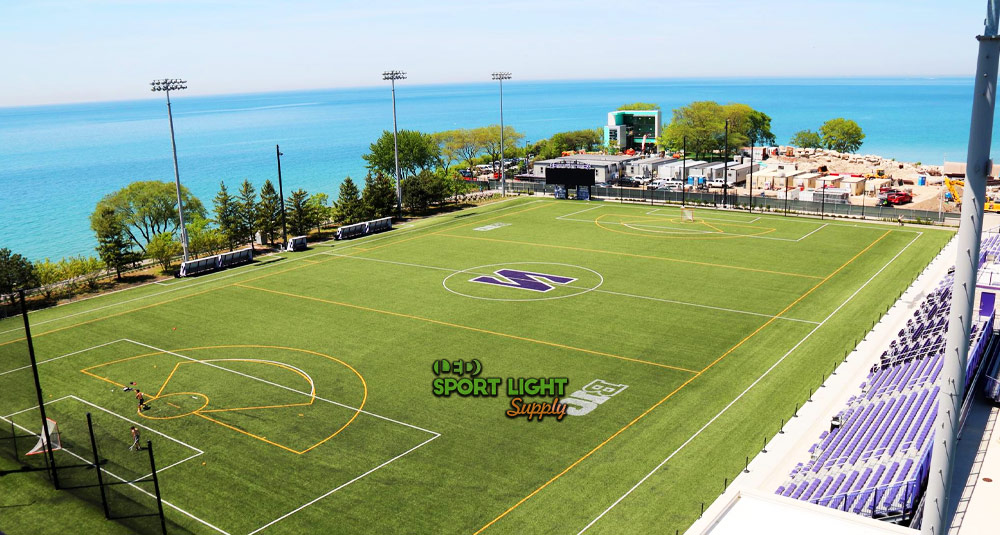
The layout of light poles around the soccer field is essential for reducing player shadows, which can affect the quality of play, especially in semi-professional games. Adding more light poles or increasing the number of field lights can help players see the details more clearly. This consideration is particularly important for professional matches that are broadcasted on television.
In some cases, even semi-professional fields might require up to a dozen light poles. The specific layout will depend on the size of the playing field and the types of LED lamps used. A photometric lighting plan, potentially utilizing DIALux analysis, can ensure the optimal placement of lights for your field.
Lamp Origin and Warranty Considerations
The origin of your LED sports lights is an important consideration. While many LED lights are available online at attractive prices, purchasing from overseas can present significant risks. Warranties on these lights can be unreliable, and if they malfunction or die prematurely, the costs to fix them could outweigh the initial savings.
Choosing a company that offers a robust warranty and reliable support is crucial. This ensures that your investment in new lighting is protected by more than just a promise from a distant factory.
Lumens and Color Temperature
The brightness of LED lighting, measured in Lumens, is a key advantage for soccer fields. However, it’s not just about brightness; the correct color temperature is equally important. For professional soccer fields, a higher Kelvin rating, often around 5500K, is typically used. Practice fields and high school fields may use lighting in the 4000-5000K range.
Working with a lighting contractor to determine the best color temperature for your field is essential. Additionally, installing a dimming system can allow for adjustable lighting on practice days, providing flexibility and energy savings. The right color temperature can also have positive effects, such as increasing energy levels and alertness among players and spectators by boosting serotonin levels.
Average Soccer Field Light Costs
Training Field Lighting Costs
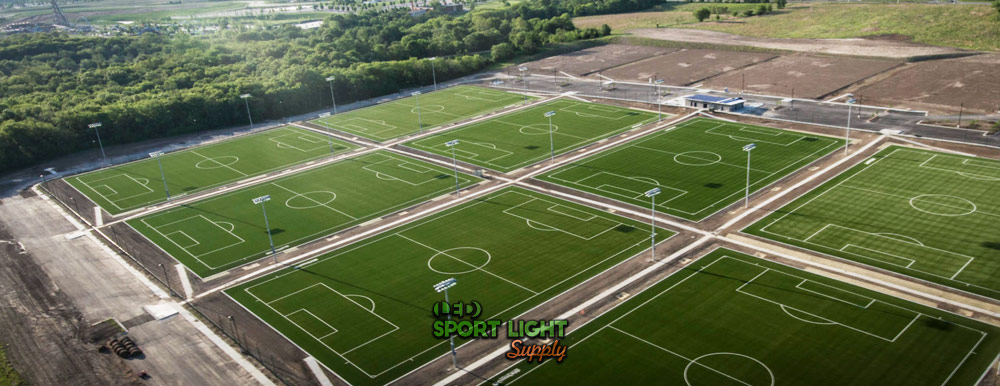
When estimating the cost of lighting for a soccer training field, it’s essential to have a basic understanding of the potential expenses. The initial cost of lighting for a soccer or football training field typically starts at around $10,000. Depending on the size of the pitch, this cost can rise to as much as $50,000. These figures represent the more affordable end of the spectrum and may or may not include additional costs for light poles installed around the field.
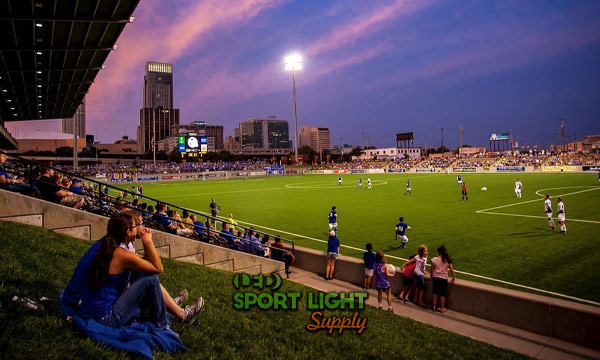
High School Soccer Field Lighting Costs
For high school soccer fields, where official matches between competing schools are held, the lighting requirements are more demanding. The lighting needs to be more professional, with a focus on reducing shadows across the pitch. The cost for LED lighting for a high school soccer field usually starts at $50,000 and can go up to $150,000, depending on the complexity and specific requirements. These lights provide better coverage and are well-suited for official matches.
International Competition Lighting Costs
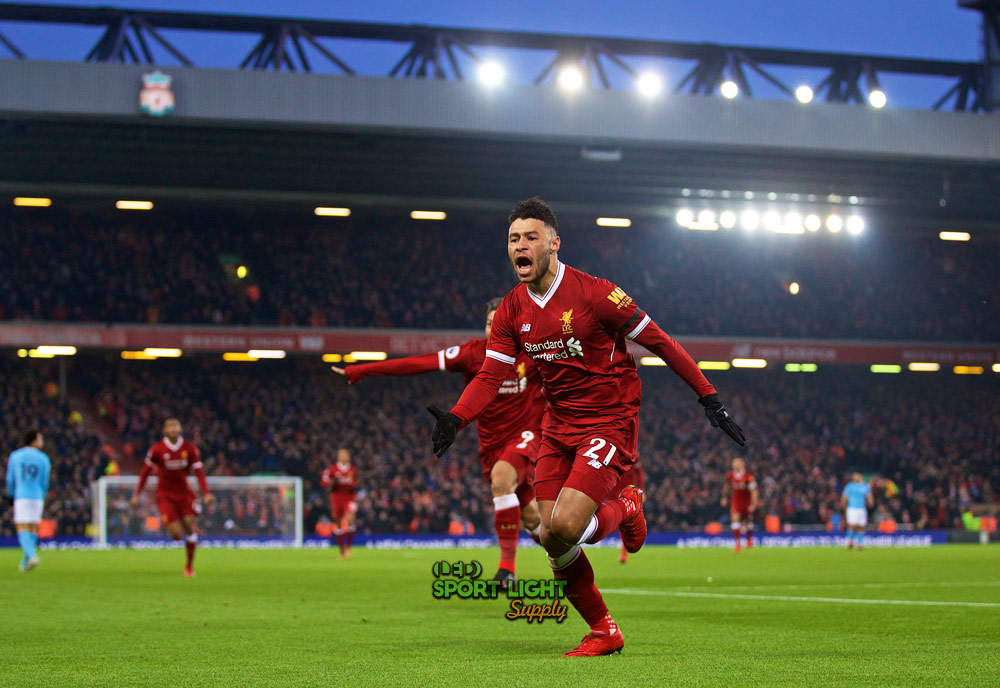
For outdoor soccer pitches that host professional or semi-professional matches, especially those that are not major stadiums, the lighting requirements are even more stringent. These venues often need to meet the lighting standards recommended by football associations such as FIFA and UEFA, particularly if the matches are televised. The cost of LED lighting for these fields typically starts at $150,000 and can reach up to $500,000 at the higher end. This investment ensures lighting uniformity and shadow reduction, which are crucial for complying with professional soccer regulations.’
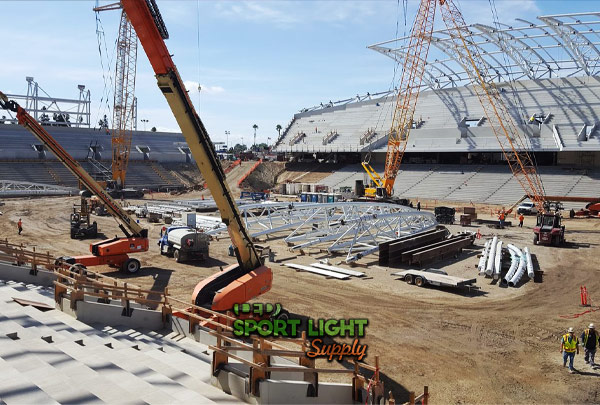
Lighting Installation Costs for Soccer Fields
The cost of installing lighting on a soccer field can vary significantly depending on the contractor. Each contractor will provide a detailed contract that outlines the installation expenses from start to finish, which may include the installation of light poles by the same team. These costs can fluctuate based on several factors, such as the complexity of the project, the size of the field, and the specific lighting requirements.
One way to potentially reduce these costs is by purchasing LED lighting in advance. If your contractor is aware that the lighting is well-suited for your field, they will be able to install it efficiently, ensuring optimal performance.
Running Costs of Soccer Field Lights
One of the most compelling benefits of LED lighting is the substantial cost savings they offer. Traditional sports lighting systems consume large amounts of energy, resulting in high maintenance and operational costs. However, LED lights can reduce these costs by 75-85% immediately, which is reflected in lower electricity bills. This cost-effectiveness is long-lasting, as the savings can extend for more than 25 years.
Unlike traditional filament lamps, LED lights do not diminish in brightness over time, further increasing cost savings each year. Since LED floodlights operate using a semiconductor rather than a filament, there is no need to replace bulbs. The daily energy cost of running LED lights is minimal, amounting to mere pennies, making the annual running costs very economical.
Advantages of Buying LED Soccer Field Lights
Switching to LED lighting for your soccer field not only results in significant energy savings but also comes with a range of additional benefits. Although the initial installation costs may seem high, the investment is quickly recouped through reduced energy expenses. LED lights are brighter and provide more uniform illumination compared to older lighting systems.
LED lights also eliminate common issues such as flickering and long warm-up times. They can be dimmed and turned on or off as needed without any cool-off period, making them highly adaptable to different lighting requirements. Additionally, LED lights maintain their brightness consistently over time, providing a stable output of Lumens throughout their lifespan, which can extend up to 25 years—far surpassing the 1-2 year lifespan of traditional filament bulbs.
Soccer/Football Field Lighting Cost Q&A
How to Save on Costs When Buying Soccer Field Lights
One effective way to save on costs is by purchasing LED lighting directly rather than allowing a lighting contractor to choose the brand. By doing so, you can maintain better control over your budget and avoid potential mark-ups that a contractor might add. This approach not only saves money but also gives you the flexibility to select lighting that meets your specific needs without unnecessary expenses.
How to Find Soccer Field Lights for Sale
When searching for soccer field lights, it is essential to choose a supplier that offers a solid warranty, especially given the expense of these products. Opt for a supplier who provides reliable after-sales support, including prompt replacement services in case of malfunction. Suppliers based in your country or region can offer faster service compared to those located abroad, who may take months to replace faulty lights.
Discounts are often available for bulk purchases, making it worthwhile to inquire about potential savings. Reputable suppliers will offer competitive prices while ensuring the quality and reliability of their products.
How Long Does It Take to Replace All the Lights on a Soccer Field?
Replacing all the lights on a soccer field can vary in duration, depending on the number of lights being installed and whether the old lights need to be removed. Typically, the process can take from one week to several weeks. This replacement usually occurs during the off-season when no games are scheduled, allowing for uninterrupted installation and fine-tuning of the lighting to achieve optimal uniformity.
What Is the Lifespan of New Soccer Field Lights?
The lifespan of LED soccer field lights is typically around 25 years, with the lights rated for 100,000 hours but no less than 50,000 hours. This longevity makes it worthwhile to replace older lights, as LEDs are more durable and less susceptible to weather conditions like cold and heat. In contrast, traditional sports lamps have a much shorter lifespan of 1-2 years and are more affected by environmental factors.
Are Football Field Lights Only Useful for Nighttime Games?
LED lights are not only beneficial for nighttime games but can also be used during the day. They help reduce shadows caused by natural sunlight and maintain consistent lighting even in cloudy or overcast conditions. During nighttime, the lights provide illumination comparable to daylight, while in the daytime, they offer a natural fill light that enhances visibility.
Can New LED Lights Be Mounted on Old Football Field Brackets?
It is possible to mount new LED lights on existing brackets from older lighting systems, but this may not always be practical. Older lights tend to be larger and take up more space on light poles, whereas modern LED floodlight panels are more compact and efficient. Using old brackets might be considered cost-effective, but new brackets are often recommended to ensure the best fit and performance for the new lights.
How Many Lumens Are Needed to Light a Soccer Field?
The number of lumens required to light a soccer field depends on the size of the field. A standard practice field typically needs between 300,000 and 450,000 lumens, while larger fields, such as those used for semi-professional or professional matches, may require between 500,000 and 1,500,000 lumens. The exact number will vary based on the specific dimensions and lighting requirements of the field.
Conclusion
Upgrading to LED lighting for a soccer or football field is a significant investment that pays off in the long run. With benefits like reduced energy consumption, lower maintenance costs, and improved lighting quality, LED lights are an excellent choice for fields of all levels, from practice pitches to professional stadiums. By carefully considering factors such as field size, competition level, and installation specifics, you can ensure that your lighting solution is both cost-effective and tailored to meet your needs, enhancing the experience for players and spectators alike.
